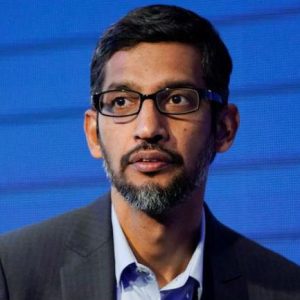The unveiling of Google’s quantum chip, Willow, not only marked a breakthrough in computation but also sparked a visionary exchange between Google CEO Sundar Pichai and SpaceX’s Elon Musk. Pichai suggested, “We should do a quantum cluster in space with Starship one day,” linking quantum advancements with Musk’s interstellar ambitions.
Musk responded confidently, “That will probably happen. Any self-respecting civilisation should at least reach Kardashev Type II,” hinting at humanity’s potential to harness galactic energy.
We should do a quantum cluster in space with Starship one day:)
— Sundar Pichai (@sundarpichai) December 9, 2024
A Quantum Leap Beyond Classical Computing
Google’s Willow chip shattered the limitations of classical computing, completing a computation in under five minutes that would take today’s fastest supercomputer 10 septillion years.
Using 105 qubits and exponential error correction, Willow solves challenges that have hindered quantum computing for decades. “This is a breakthrough,” Pichai tweeted, celebrating the chip’s historic achievement, breaking a 30-year challenge in the field.
According to Julian Kelly, director of hardware at Google Quantum AI, “Willow achieves quantum coherence times of 100 microseconds—five times longer than its predecessor Sycamore—while delivering performance breakthroughs in error correction and computation scalability.”
By achieving quantum error rates below critical thresholds and outpacing the world’s fastest supercomputers in certain benchmarks, Willow showcases the growing chasm between classical and quantum computing for complex tasks.
Ripple Effects and Industry Buzz
The announcement reverberated across industries, drawing reactions from tech leaders and the public. Musk’s reference to solar-powered deserts and humanity’s low Kardashev scale ranking contextualised the enormity of Willow’s leap.
Meanwhile, experts like John Preskill called Willow’s performance a defining moment: “The hardware has reached a stage where it can advance science in ways classical systems simply cannot.”
Cryptography experts flagged potential disruptions, as quantum systems may soon unravel classical encryption methods. On the practical side, Willow’s capabilities promise revolutionary applications in AI, drug discovery, and energy optimisation — fields constrained by classical systems.
Microsoft also bets big on quantum. The company is making significant strides in quantum computing through a partnership with Atom Computing. The collaboration recently achieved a world record by entangling 24 logical qubits, with plans to launch a commercial quantum computer by 2025.
“With 100 reliable qubits, we achieve scientific advantage,” said Microsoft CEO Satya Nadella, emphasising the transformative potential of fault-tolerant quantum systems.
Microsoft’s approach focuses on integrating quantum technology into its Azure platform, combining quantum and classical computing to address challenges in materials science, climate modeling, and drug discovery. Nadella highlighted the stakes, noting, “The foundation we’re building now will determine the leaders of tomorrow.”
IBM, on the other hand, is positioning itself as a key player in the quantum race with its IBM Quantum System Two, described as “the building block of creating quantum supercomputers.”
These systems are already being deployed in countries like Japan, South Korea, and Germany. IBM’s director of research emphasised their unique strength: “Quantum computers allow us to simulate nature in ways classical systems cannot,” enabling breakthroughs in materials science, chemistry, and industrial processes.
IBM CEO Arvind Krishna sees quantum as the next major frontier for the company, calling it “our big bet for the future.” He highlighted the importance of integrating quantum with AI and cloud technologies, stating, “IBM will become a hybrid cloud, AI, and quantum company as the technology matures.”
Focusing on hybrid quantum-classical computing: A few days back, AWS partnered with NVIDIA to push the boundaries of hybrid quantum-classical computing with the integration of NVIDIA’s CUDA-Q platform into Amazon Braket. This collaboration enables researchers to develop and test quantum-classical workflows using GPU-accelerated simulators within Braket’s managed environment. Stefan Natu of AWS explained that the integration includes a pulse-level programming interface, initially mapped to QuEra’s hardware, marking a significant step in Braket’s evolution as a unified platform for quantum innovation.
This partnership addresses the rising demand for classical compute resources essential for quantum tasks such as error correction and circuit simulation. Braket’s GPU-based simulations have demonstrated up to 350x speed improvements over CPU-based alternatives, streamlining the testing and deployment of quantum algorithms. Looking forward, AWS and NVIDIA are targeting ultra-low latency co-processing and AI-enabled quantum simulations, paving the way for quantum-accelerated supercomputing.
What’s Next for Google in Quantum Computing?
Building on the success of Willow, Google’s roadmap aims to create a quantum computer with a thousand well-protected logical qubits — equivalent to roughly a million physical qubits. This ambitious plan is part of a six-milestone strategy that Google Quantum AI has been pursuing since its breakthrough in 2019.
“We are now approaching the third milestone, about halfway through our roadmap,” said Hartmut Neven, the founder of Google Quantum AI.
The next challenge lies in refining error correction further, an area critical for achieving fault-tolerant quantum systems.
“There is always this competition between errors, classical systems, and the quantum machine,” Neven explained. “If you’re going to win, you have to fight off both the noise and the classical machine.”
Progress so far has been guided by Neven’s Law, a principle describing the double exponential increase in computational power as qubit quality improves and error rates decline.
Google is also focusing on moving from benchmarks like random circuit sampling (RCS), which demonstrates computational supremacy, to solving practical, commercially valuable problems. “The next step is to train this enormous compute power towards a task that people on Main Street would care for,” said John Preskill, theoretical physicist and long-time quantum computing advocate.
Neven remains optimistic about the timeline: “Early commercial applications could arrive in half a decade or a few years rather than multiple decades.” With these developments, Google’s vision for a quantum-first future is rapidly becoming reality, paving the way for transformative applications in science, technology, and beyond.





























